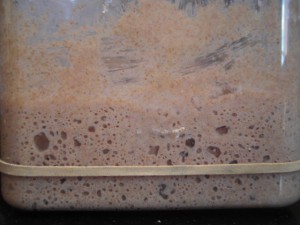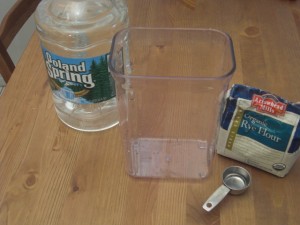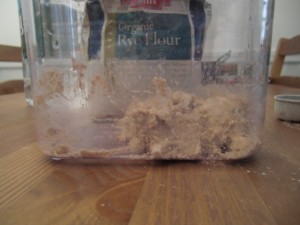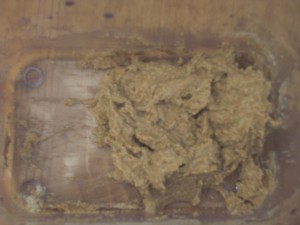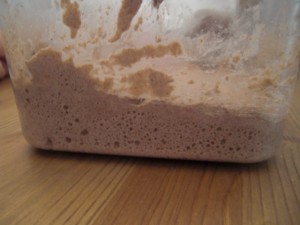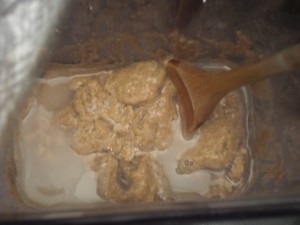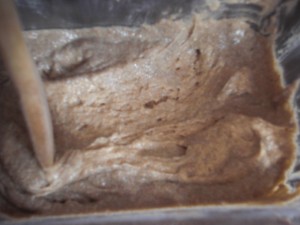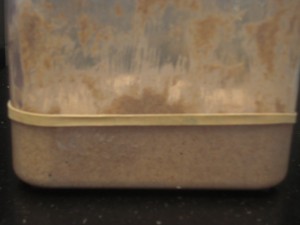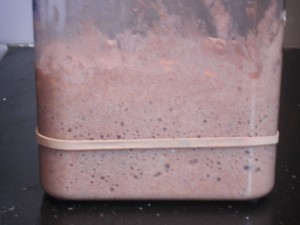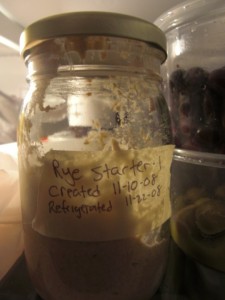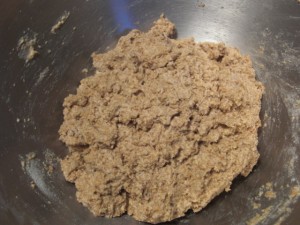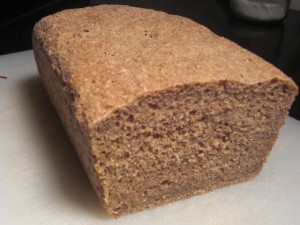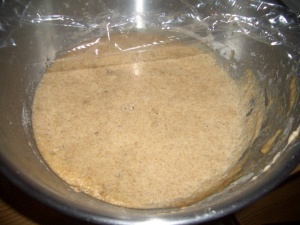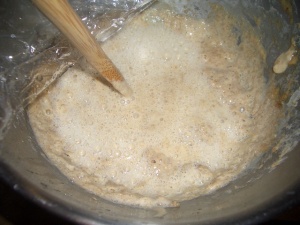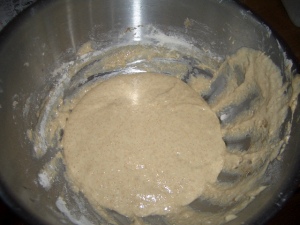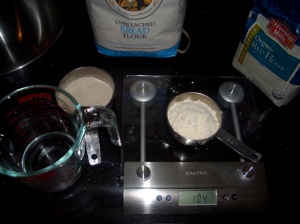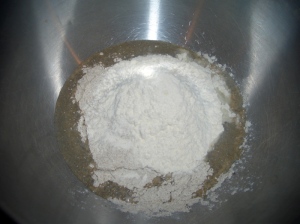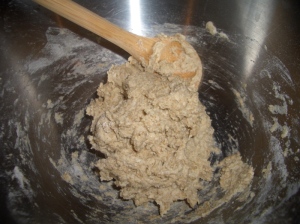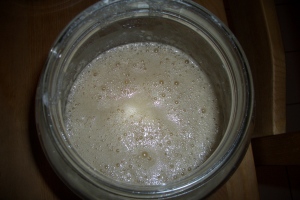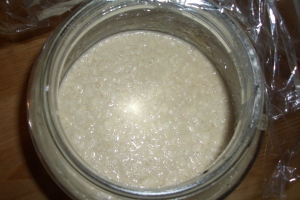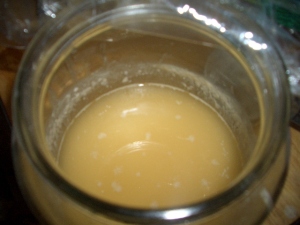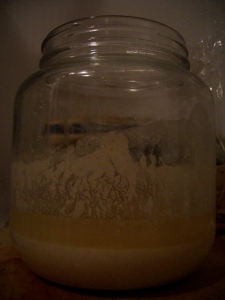After two failed attempts at creating a sourdough starter from scratch, and a lot of helpful advice and comments from readers, I have created what appears to be a very healthy 12 day old starter.
The method came from Mike at SourdoughHome.com, by way of Jonathan and it was very simple (thanks guys!):
Mix 1/4 cup of water with 3/8 cup of organic rye flour in a container, cover it loosely with plastic wrap, and feed it 1/4 cup of water and 3/8 cup of organic rye flour every 8-12 hours. That’s it!
The major indicator that the starter is healthy is that it doubles its size between feedings. After about 2 days, it started doing this consistently. It also developed a very tangy, green-apply smell, and the gas bubbles in the dough between feedings appeared to be growing bigger each day.
Day 2: Before Feeding
Day 2: Stirring in the water (note there are no bubbles)
Day 3: Stirring before feeding, notice the air pockets!
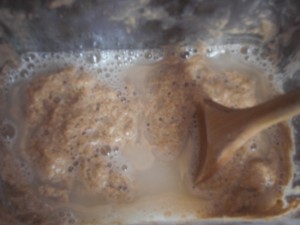
Day 3: Mixing in the water, it gets milky and lots of bubbles develop
Day 3: Marking the height
Day 4: More than doubled in size!
To prevent the dough from taking over your kitchen, Sourdough Mike recommends disposing of 1/2 of the starter following each feeding, (I’ve been throwing out 1/2 each day).
Although my starter appears healthy, Mike recommends not storing it in the fridge until it is 30 days old. So while I can start using it, I have to keep feeding it twice daily. As an insurance policy though, after today’s feeding instead of throwing 1/2 of it out, I put it in a jar and stored it in the fridge. Just in case anything happens to my pet I’ll have a clone.
It really has been like having a pet. I feed it at night before I go to sleep, and then in the morning before I leave for work and marvel at how much it has grown. Once a week I transfer the starter to a bowl while I clean out its cage, and I make sure I give it lots of love. In return, I’m hoping this baby is going to make me some tasty bread. Tomorrow it will finally be put to the test as I attempt to make a sourdough batard from Daniel Leader’s book Local Breads, stay tuned!

